When the Wilderness Systems Tsunami 145 was added into the trio of updated Tsunamis to their light touring line-up in late 2018, they billed this latest iteration “the Swiss Army Knife of touring kayaks.”
Wilderness Systems Tsunami 145 Kayak Specs
Length: 14 ft 6 in
Width: 25.5 in
Weight: 56 lbs
Paddler Weight: 180-245 lbs
Capacity: 350 lbs
MSRP: $1,299 USD/ $1,789 CAD
$1,519 USD/ $1,929 CAD (with rudder)
Wildernesssystems.com
The Tsunami’s wide-ranging capabilities and functional aesthetic—enhanced by its unique outfitting (more on that later)—suggest a different epithet to us: the cargo pants of kayak touring. Unlike ephemeral fashion fads, however, the user-friendly Tsunami continues to be just as popular today as when it first debuted in 2004.
In the years since, Wilderness Systems has introduced three different Tsunami layups and tweaked and simplified the boat’s paddler-specific sizing—winnowing down eight options to just five. These updates take into account where and how the kayaks are being used, and who is paddling them. Translating this feedback into design refinements keeps a well-traveled offering like the Tsunami fresh and accessible for new paddlers, while giving existing fans more of what they already enjoy about the boat.
A 14-foot recreational kayak by Wilderness Systems
Our demo Tsunami 145 is the largest of the three updated sizes, proportioned to afford larger paddlers a comfortable fit and fearless stability without completely sacrificing touring efficiency.
Also new this year is a Tsunami 140 kayak—offering similar performance for mid-sized folks—and a 125, which fits larger paddlers seeking a stable day tripper. Two long-haul options, the Tsunami 165 kayak and the Tsunami 175, remain unchanged.
Reimagining a proven design is a delicate endeavor, says Shane Steffen, director of product management for Confluence Outdoor’s boat division, which includes the Wilderness Systems brand. “We started with styling,” he explains, “we wanted to bring a more modern look to the Tsunami.”
The deck redesign isn’t merely skin-deep. It also adds stiffness across the top of the boat, improving durability and resiliency during re-entries and transport.
Changes inside the cockpit are more subtle: the updated Phase 3 AirPro seat system makes it easier to adjust leg lifters, backrest height and tilt on the fly, and now enables users to trim the seat fore and aft. The seat back can also be quickly removed or swapped for a low-profile backband.
Wilderness Systems’ best kayak for stability and tracking
After 15 years on the water, Steffen has some theories about these kayaks’ popularity.
“People love the Tsunami for two main reasons,” he says. “One is the stability profile—it feels comfortable from the first time you sit in it. The second is tracking: new paddlers can point the boat where they want to go and it gets there.”
Small refinements aim to enhance these novice-friendly features. Designers shifted volume out of the hull to flare the sidewalls and further increase initial and secondary stability.
In the rec touring market—especially models for larger and newer paddlers—it’s refreshing to paddle a design promoting advanced skills.
An extended waterline gives hull speed a boost, great news for those touring with friends in longer boats.
Meanwhile, the shallow-V, multi-chine hull profile is classic Tsunami. Two defined edges in each chine act like secondary and tertiary keels, lending this kayak its trademark tracking and predictable handling.
A high-performance polyethylene sit-in kayak
Steffen says product longevity was also a focus of the redesign brief. Along with the stiffer deck, there is a replaceable skid plate where the keel reaches the stern—a wear point when dragging from the bow.
It’s something Wilderness Systems should know a thing or two about. In 2012, adventurers Jon Turk and Erik Boomer chose a pair of Tsunami 135s to complete the first-ever circumnavigation of ice-choked Ellesmere Island.
The diminutive boats were the largest that would fit in the airplane needed to reach this remote Arctic outpost. For much of the 1,500-mile journey, the men skied or hiked pulling the kayaks—each laden with 250 pounds of food and supplies—over snow, slush and jagged sea ice.
Like their predecessors, the new Tsunamis are constructed from hard-wearing-but-hefty rotomolded polyethylene. I’m not usually a dragger, but I admit to using Turk and Boomer’s strategy when I find myself alone with our demo and a long expanse of snow-crusted turf.
It’s utility, comfort and style in one package—just like your favorite cargo pants.
Hoarfrost rimes the desiccated grasses and parched canopies of the oaks lining the banks as I slip into the mirror of the river. When a gust of wind disturbs the stillness, orphaned leaves scatter like clutches of skittish water boatmen. Where the channel narrows, deadfalls create a natural slalom course.
Achieving tight-radius turns in the Tsunami necessitates putting the kayak on edge. Fortunately, cockpit fit and contact points are optimized to facilitate edging and bracing proficiency.
In the rec touring market—especially models for larger and newer paddlers—it’s refreshing to paddle a design promoting more advanced skills.
Wilderness Systems’ touring kayak accessories and features
Late in the afternoon, the sun peaks unexpectedly beneath clouds swollen with snow. Decanted golden light spills onto the river, illuminating three sleek otters fishing below a swift. The scene has me reaching for my camera, conveniently tucked in a deck pocket.
Replacing the behind-the-cockpit day hatch of previous Tsunamis, each new boat ships with a pair of mesh deck pockets. Removable cargo pockets for your front deck, these are Wilderness Systems’ solution to the question of accessible-on-the-water storage.
The pockets put small essentials within easier reach than a day hatch and are lower profile than an aftermarket deck bag, but there’s an obvious downside: they don’t provide dry storage.
The design team eschewed a more conventional third option—a cockpit-fitted deck pod—in favor of an open tube mounted under the front deck. The engineering is pretty basic, but it’s a convenient spot to stash a water bottle and doesn’t noticeably impede foot- or legroom.
Whether playing quiet waterways or venturing into open waters, the Tsunami 145 continues to offer larger paddlers a satisfying fusion of rec kayak stability and longboat efficiency. It’s utility, comfort and style in one package—just like your favorite cargo pants.
Celebrating 15 years of doing it all well. | Feature Photo: Virginia Marshall


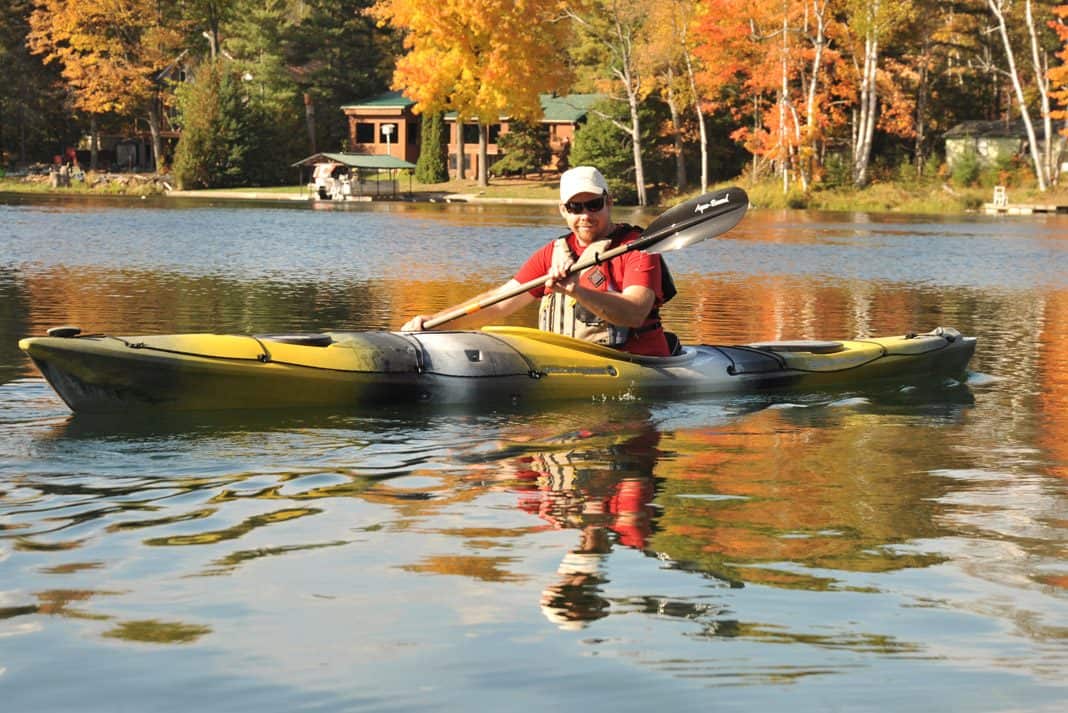
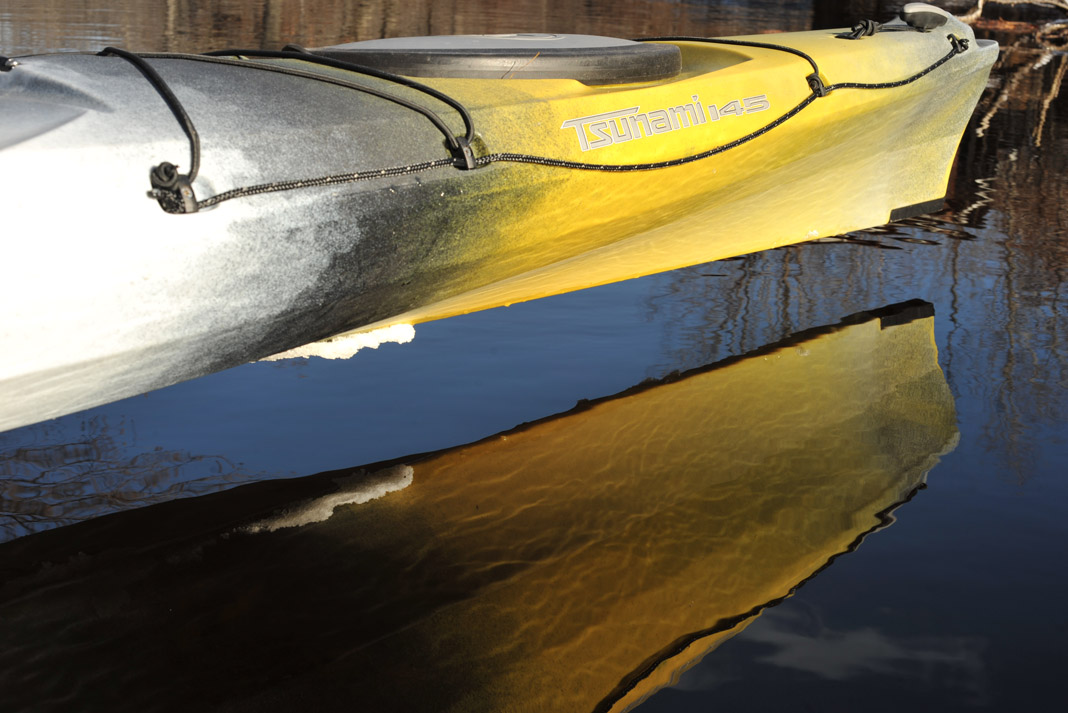
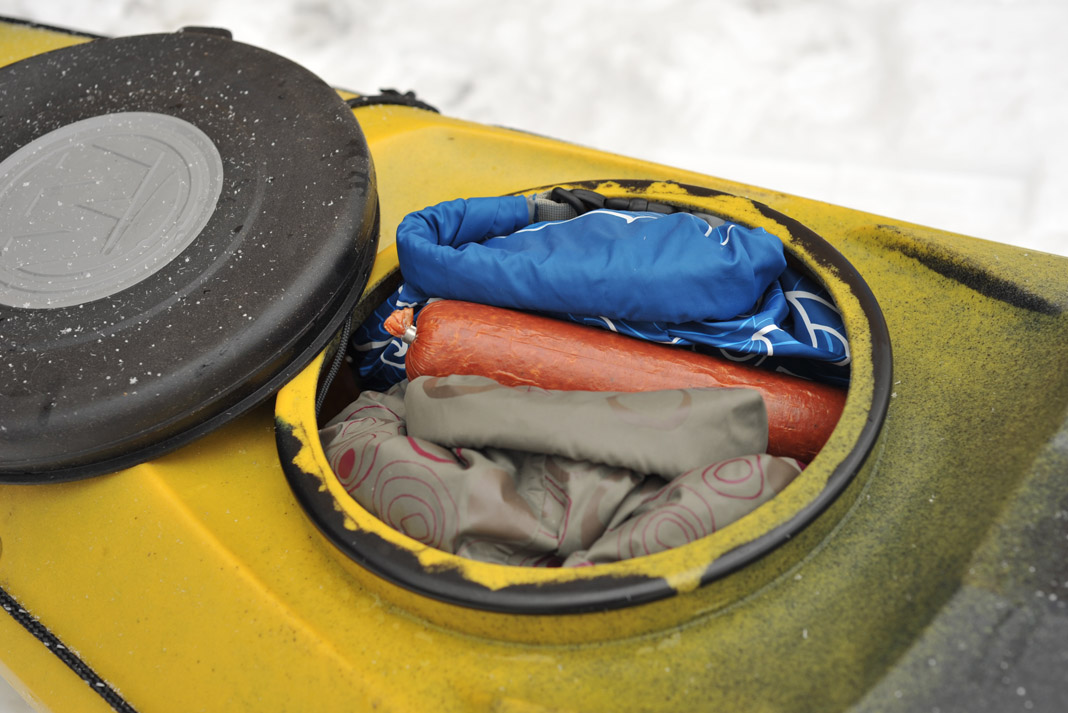
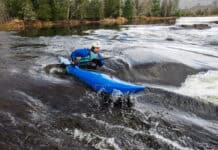
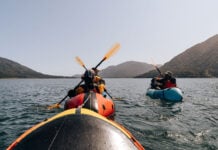
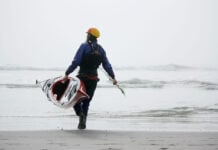
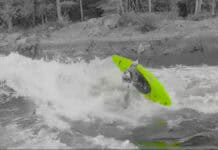
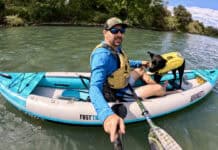


I have an early wilderness system touring sea kayak with built in pump (bilge) . I think it is called green water style. I need covers for the round forward and for the oblong stern hatch if you have an idea where I can get them I will be pleased. Great kayak Rich McCracken, CA ph 530 945 0358.
I read kayak reviews, hoping they’ll help me decide which one to buy.
I’m looking for practical information about the kayak abilities in different environments, pros and cons, and comparison to other models…
Here I found few pieces of information among plenty of poetry and irrelevant stories
“Hoarfrost rimes the desiccated grasses and parched canopies of the oaks lining the banks as I slip into the mirror of the river.”
“Late in the afternoon, the sun peaks unexpectedly beneath clouds swollen with snow. Decanted golden light spills onto the river, illuminating three sleek otters fishing below a swift”